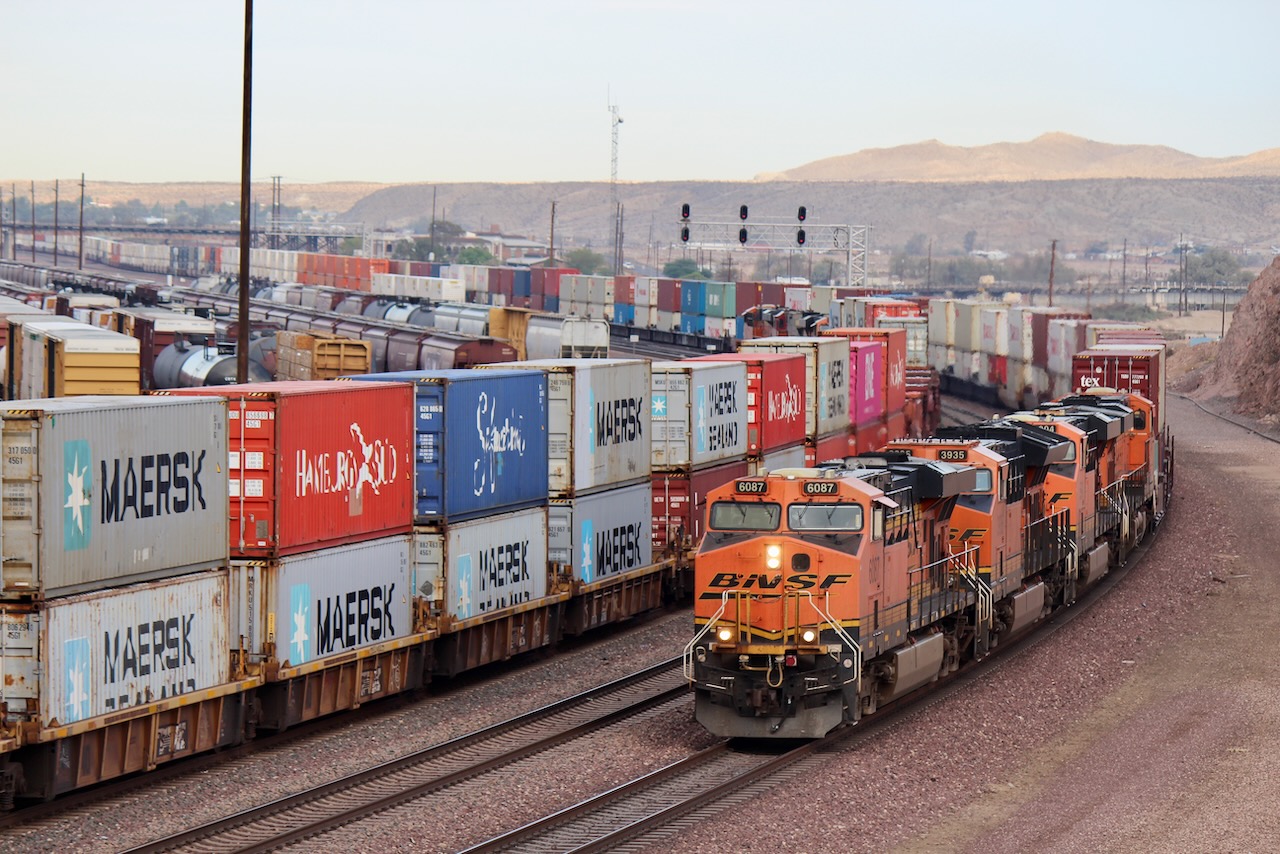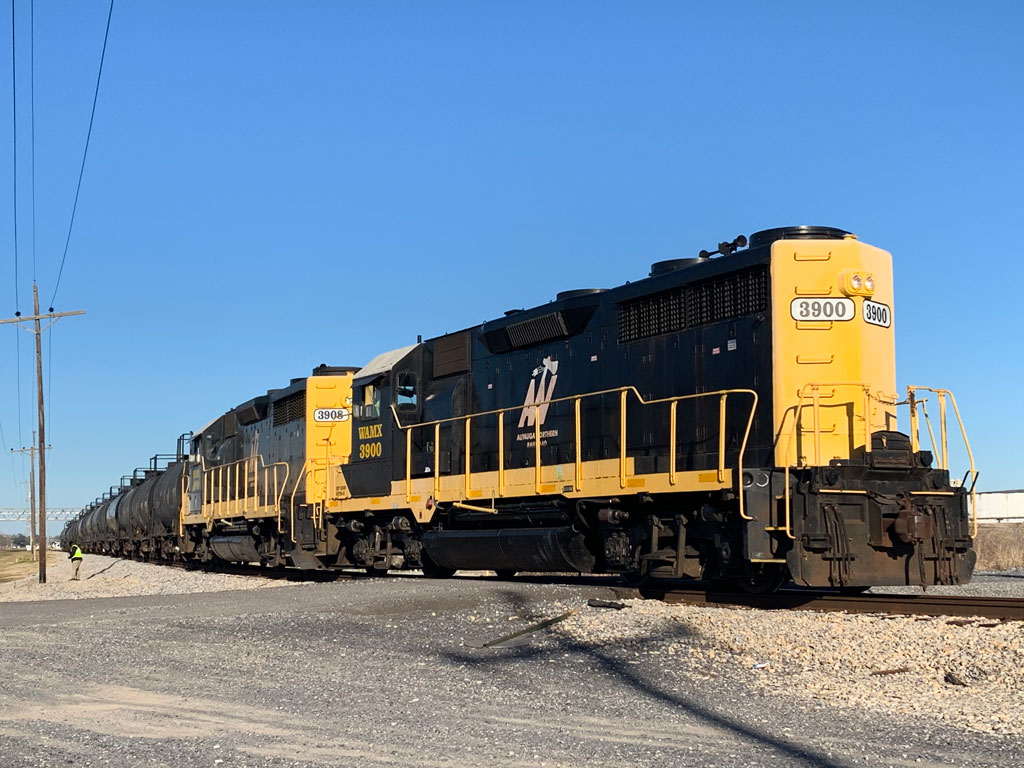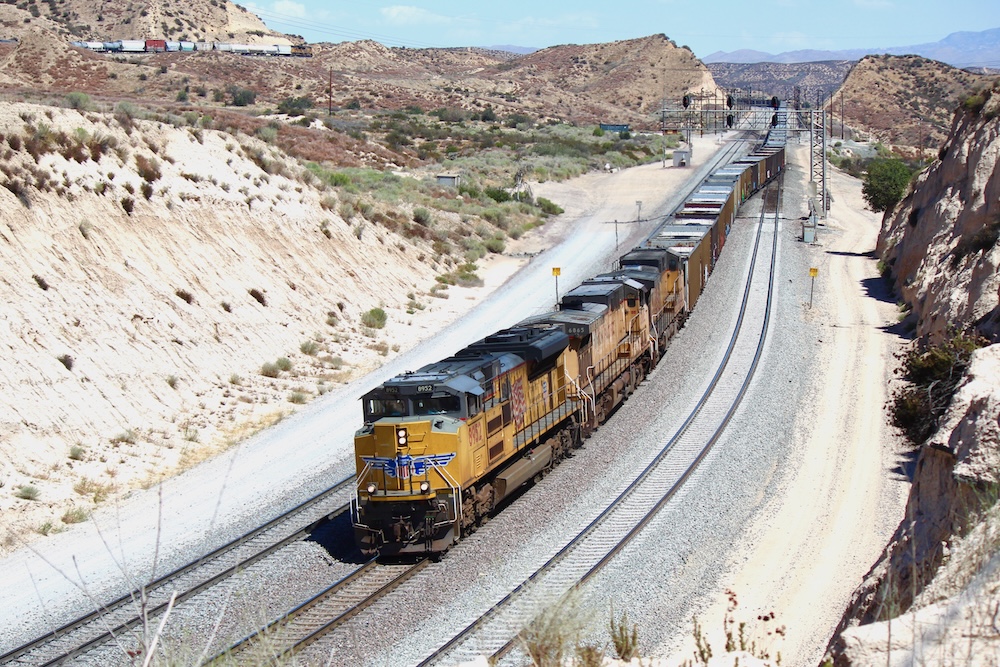
WASHINGTON — With an East Coast port strike set to begin tomorrow, BNSF Railway says it’s ready to handle additional container volume from West Coast ports, citing the record volumes it has already moved this year while maintaining service levels.
“Although no work stoppages have occurred yet, volume shifts to the west coast have already been underway for the past six weeks, with the amount of volume diverted increasing each week,” BNSF CEO Katie Farmer wrote in a letter to Surface Transportation Board Chairman Robert E. Primus.
Last week Primus requested information from BNSF and Union Pacific about how they will be able to handle an anticipated surge in container volume as importers divert shipments to the West Coast in order to avoid gridlock as dockworkers are expected to strike ports from Maine to Texas beginning Oct. 1.
In the first six months of this year, BNSF set a record for on-dock container volumes.
“Despite the increase in volume, BNSF’s intermodal velocity has remained consistent. While there has been some increase in container dwell at west coast ports, dwell at the marine terminals we serve has largely held steady even as we have seen significant increases in volume,” Farmer wrote in a Sept. 27 letter that was posted to the STB website today. “The service performance we are demonstrating now is thus indicative of our ability to handle additional volumes coming to the west coast as a result of a potential work stoppage.”
Farmer says that BNSF’s capacity expansion investments on its Southern Transcon — $2.9 billion since 2019 — will allow it to handle more volume off the West Coast.
The main line capacity expansion projects include the addition of more than 100 miles of main track, as well as 40,000 feet of processing tracks at its Belen, N.M., terminal that help speed refueling, inspections, and crew changes. In intermodal terminals, BNSF has added five miles of new crane production tracks and 8,000 new parking spaces.
BNSF says it has been carefully monitoring the port volume situation and is engaged with ocean carriers, port terminal operators, and connecting railroads to ensure that it has the most up to date information on incoming volumes.
The railway has pulled all of its international double-stack well cars out of storage and has staged surge locomotives at key points on its system.
BNSF says Alameda Belt Line’s takeover of dispatching of the Alameda Corridor from Union Pacific has improved fluidity on the key route out of the ports of Los Angeles and Long Beach. “Since ABL began dispatching the corridor in late July, BNSF’s westbound transit time has decreased by two hours,” Farmer wrote. “This substantial gain in fluidity has been made possible by the ABL cutover.”
BNSF also is departing full length westbound trains from Chicago on schedule, even without a full load of containers, in order to get the equipment back to West Coast ports for reloading. “September has thus far been our fastest car miles-per-day month for our stack cars,
and rail transit time for Inland Point Intermodal freight has improved by more than 50% from 2022,” Farmer wrote.














She didn’t say anything about staffing. Will the crews be there?
IPI=Inland Point Intact
Regarding the starting of stack cars and containers back without waiting to build a longer train, this brings a smile to those of us BN and BN predecessor veterans who were preaching “an empty is a load waiting to move” back in the 1960’s and 70’s. NYC and SOU were running their operations that way already then. PSR concepts cost business that, if won, justifies the additional costs, and the revenue side of operating ratio is just as effective as operating economies, if not more so, if there is sufficient attention to targeting markets. This is without considering that fast equipment turnaround saves equipment investment. As to the Transcon line capacity improvements, Rob Krebs should be smiling since he fought off the short-term earnings pressure from Wall Street to bring those about, and so should his now-retired successor Matt Rose who fought to continue them.